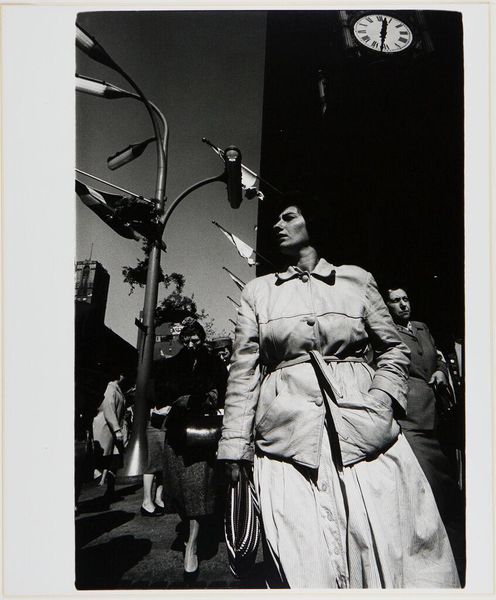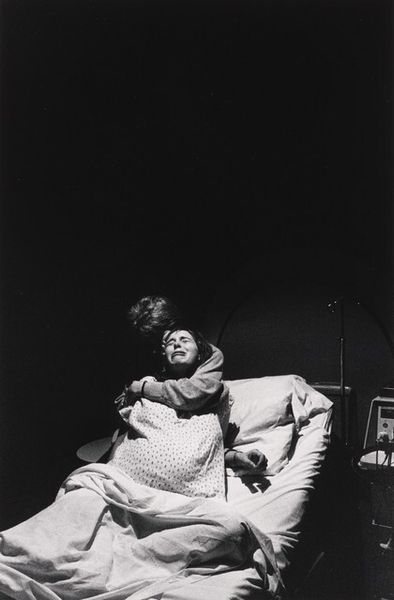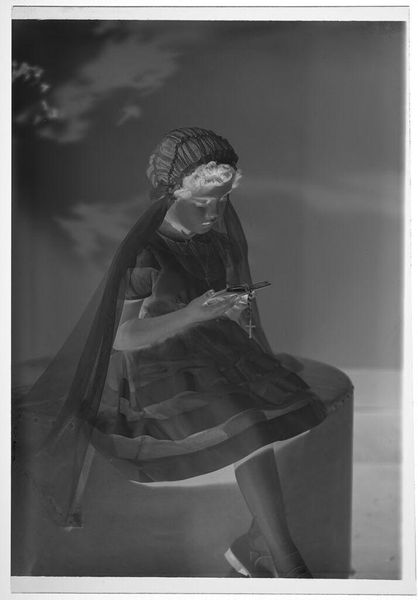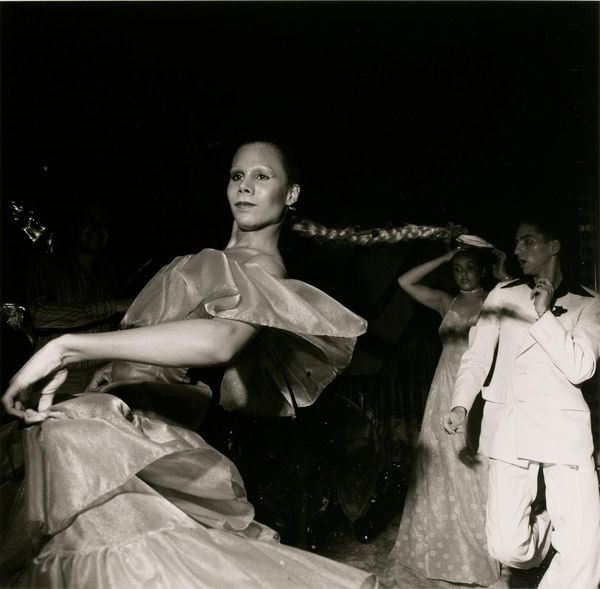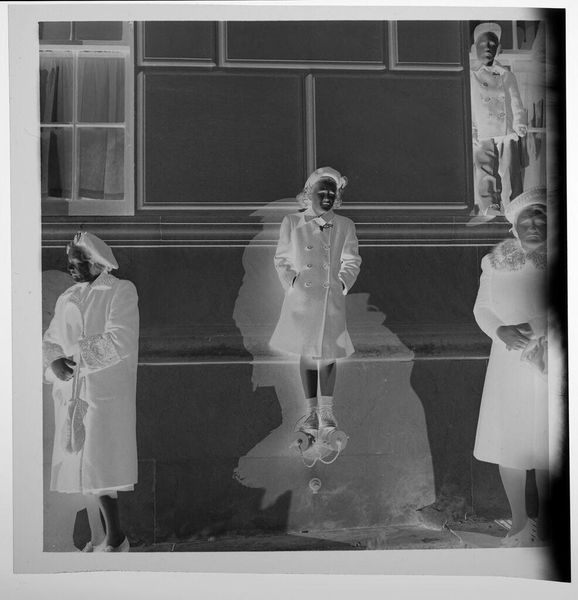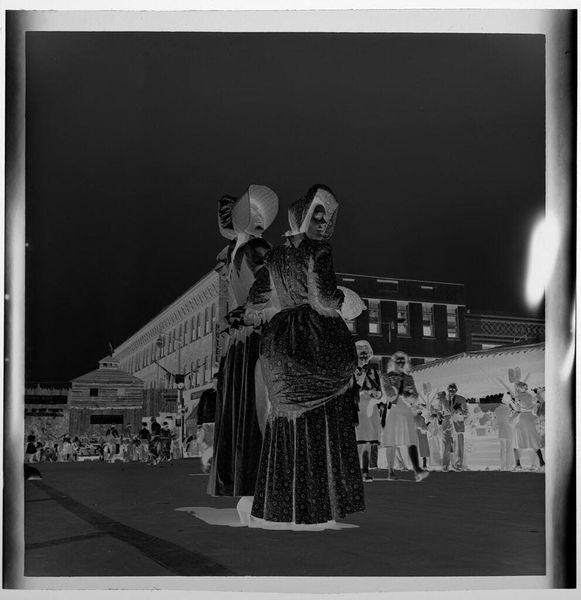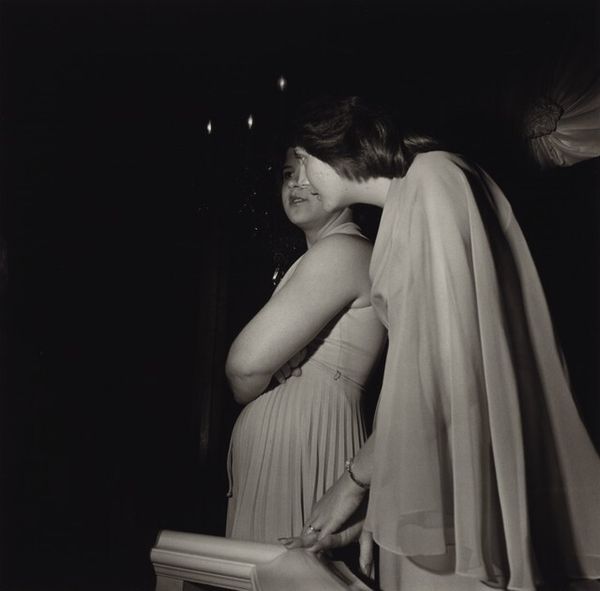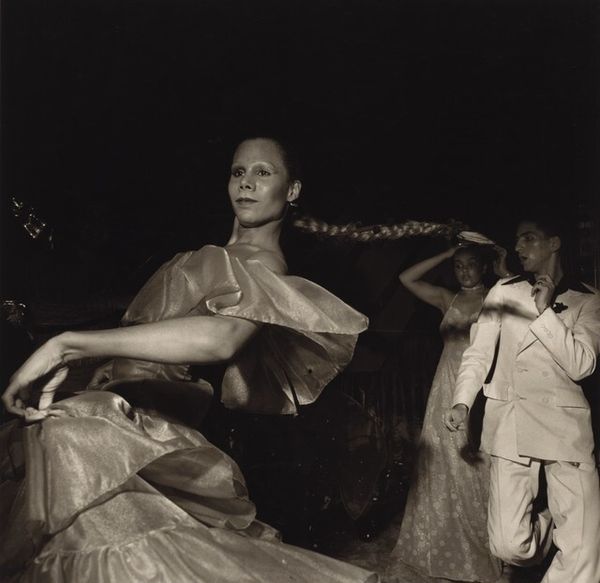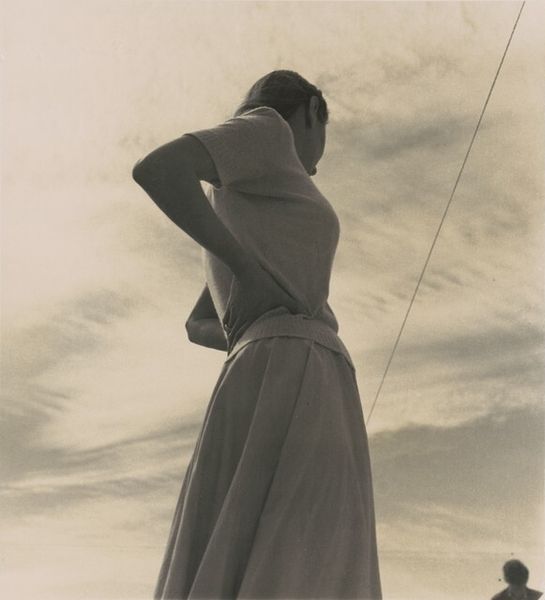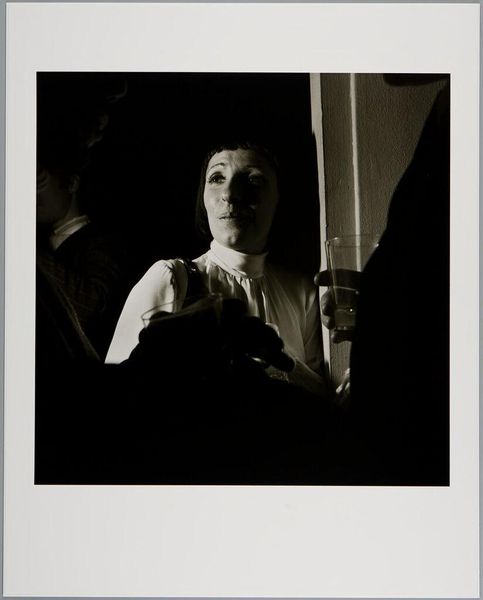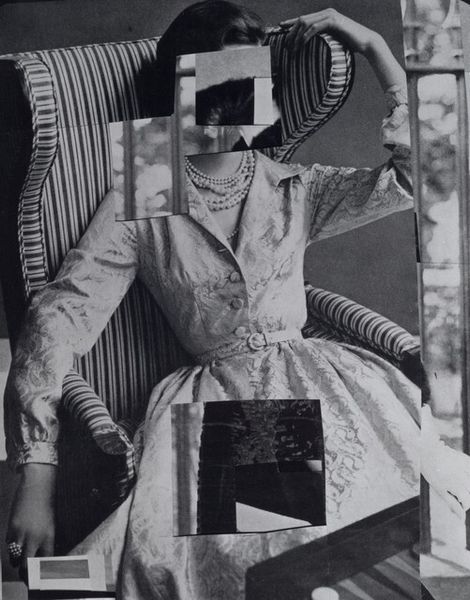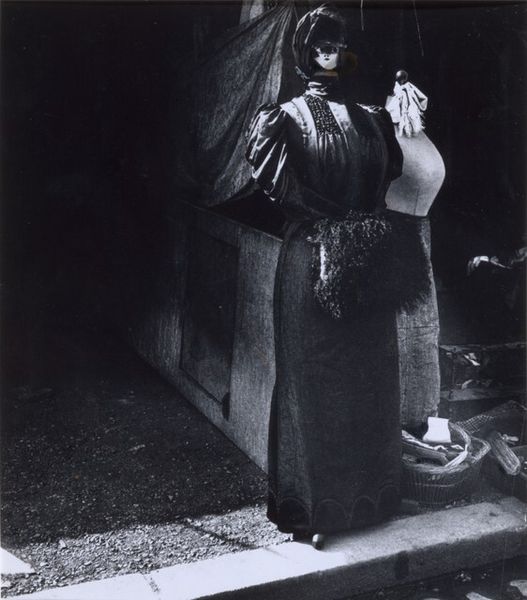
photography, gelatin-silver-print
#
portrait
#
black and white photography
#
street-photography
#
photography
#
black and white
#
gelatin-silver-print
#
monochrome photography
#
cityscape
#
monochrome
#
modernism
#
realism
Dimensions: overall (image): 40.6 x 27.1 cm (16 x 10 11/16 in.) sheet: 43.18 x 35.56 cm (17 x 14 in.) mat: 60.96 x 45.72 cm (24 x 18 in.)
Copyright: National Gallery of Art: CC0 1.0
Editor: Here we have Harry Callahan's gelatin silver print, "Chicago," created in 1961. The sharp focus and stark contrast create a striking image of everyday life. The woman at the forefront appears very composed, almost stoic. How do you interpret this work? Curator: This image encapsulates a pivotal moment in American social history. Callahan's street photography, like that of his contemporaries, offered a critical lens onto urban life and gender roles in the post-war era. What does the woman's gaze suggest to you? Does it communicate something beyond a simple portrait? Editor: She seems almost detached, not really engaging with her surroundings. It’s interesting given how many other people there are surrounding her in the frame. Curator: Exactly. Consider the context: The early 60s were marked by social upheaval, and shifting expectations of women in public and private spheres. This woman is present but somewhat removed, framed against the backdrop of a busy cityscape that emphasizes both her presence and isolation. Think of the visual language deployed to signal an almost suffocating atmosphere. Editor: I see that! So her somewhat withdrawn demeanor is reflective of the time. And also her stylish, belted jacket. It makes me think of social expectations about femininity. Curator: Precisely. Callahan's genius was his ability to capture not only a person but also the underlying currents of their time. What this makes you think about women in urban environments today? Editor: This makes me want to spend more time observing these kinds of interactions in public spaces, thinking more critically about who is there, and why. Thank you! Curator: Absolutely. The real power of art lies in its capacity to help us recognize ourselves and to ignite necessary questions.
Comments
No comments
Be the first to comment and join the conversation on the ultimate creative platform.
